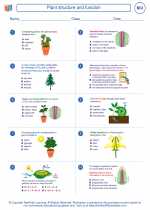Diffraction
Definition: Diffraction is the bending of waves around obstacles and the spreading of waves as they pass through an opening or aperture.
Types of Diffraction:
- Fraunhofer Diffraction: Occurs when light waves are diffracted by a single slit or aperture.
- Fresnel Diffraction: Occurs when light waves are diffracted by an obstacle or by multiple slits.
Factors Affecting Diffraction:
- Wavelength: Shorter wavelengths result in less diffraction, while longer wavelengths result in more significant diffraction.
- Size of the Opening or Obstacle: Smaller openings or obstacles result in more significant diffraction, while larger openings or obstacles result in less diffraction.
- Distance from the Source: The distance from the source of the waves affects the degree of diffraction observed.
Applications of Diffraction:
- Diffraction Grating: Used in spectroscopy to disperse light into its component wavelengths.
- X-ray Diffraction: Used to study the structure of crystalline materials, including biological molecules such as DNA and proteins.
- Acoustic Diffraction: Used to design concert halls and auditoriums for optimal sound distribution.
Study Guide:
- Define diffraction and explain its significance in the behavior of waves.
- Compare and contrast Fraunhofer and Fresnel diffraction, providing examples of each type.
- Discuss the factors that affect the degree of diffraction observed, and provide real-life examples of how these factors can be manipulated for practical applications.
- Explore the various applications of diffraction in different scientific and engineering fields, and explain the specific principles that make these applications possible.
- Conduct experiments to demonstrate diffraction using different types of waves (e.g., light, sound) and different types of obstacles or openings.
◂Biology Worksheets and Study Guides High School. Plant structure and function
Worksheet/Answer key Plant structure and function
Plant structure and function  Worksheet/Answer key
Worksheet/Answer key Plant structure and function
Plant structure and function  Worksheet/Answer key
Worksheet/Answer key Plant structure and function
Plant structure and function  Worksheet/Answer key
Worksheet/Answer key Plant structure and function
Plant structure and function  Vocabulary/Answer key
Vocabulary/Answer key Plant structure and function
Plant structure and function  Vocabulary/Answer key
Vocabulary/Answer key Plant structure and function
Plant structure and function 

 Worksheet/Answer key
Worksheet/Answer key
 Worksheet/Answer key
Worksheet/Answer key
 Worksheet/Answer key
Worksheet/Answer key
 Vocabulary/Answer key
Vocabulary/Answer key
 Vocabulary/Answer key
Vocabulary/Answer key

The resources above cover the following skills:
Concepts of Life Science (SC1, SC2, SC3)
The student demonstrates an understanding of the structure, function, behavior, development, life cycles, and diversity of living organisms by describing the structure-function relationship